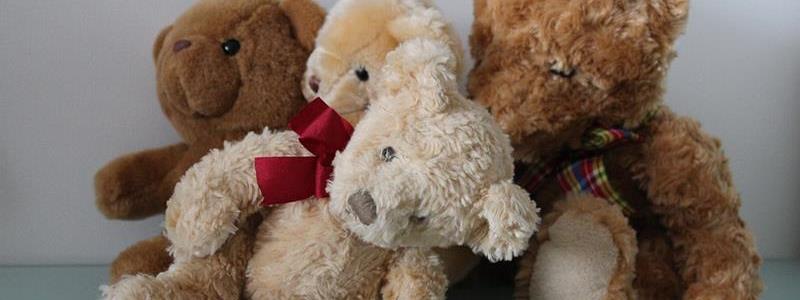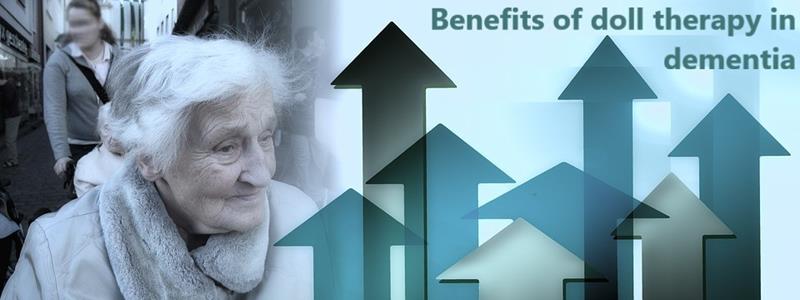Doll therapy in dementia care
Therapeutic use of doll therapy in dementia has been observed and it becomes more and more popular, regardless of ifs controversies.
This therapy involves offering dolls to adults what is believed to improve their engagement, comfort, and quality of life. Patients cuddle them, talk to them and sometimes treat them like children. While still more some more research on this kind of therapy is needed, it seems to have no side effects and no interactions with medications. Therefore we believe that this is a worthwhile option to consider.
By those in favour, doll therapy is believed to challenge behaviours such as anxiety, aggression, agitation and to potentially improve quality of life for patients with dementia. On the other hand, doll therapy opponents are concerned about the dignity of the person with dementia. They are worried that people with dementia are treated like children and patronised.
What is doll therapy in dementia care?
This type of therapy involves the simple act of offering a doll to a patient in need of soothing. Patients should be able to find dolls themselves. It is not recommended to hand a person a doll, as it may impose the responsibility to the person. It is up to them whether they decide to choose to care for the doll. Usually, patients very soon become more calm, they are smiling and hugging the doll. Sometimes they recognise this is a doll, other times they believe this is a real child. The way the doll is perceived (as a real child or as a doll) may change on a daily basis.
Dementia doll therapy guidelines
Introduce the doll gradually
When introducing the doll for the first time, make sure you do it gradually. Don’t hand it to the person, but rather place it in a visible place or hold it yourself. Giving a direct responsibility is definitely too much for the patient and we should avoid it by all means
Don’t force the patient to use the doll
not everybody will interact with dolls so don’t force the patient to use the doll. If the person shows no interest, don’t force them to use the doll. Most probably, if they didn’t like the doll at the very beginning, it is not very likely they will like it later on.
Doll therapy should be agreed with the family
The caregiver should discuss the idea of introducing the doll therapy with the family first. Not everybody would like to see their beloved elderly parent playing with a doll, they may feel their beloved ones are treated like children and patronised. The carer should explain the general idea of doll therapy and outline all the possible benefits of using it. Such transparency may convince the family that doll therapy is a good idea.
Be culturally sensitive
When choosing a doll, try to choose one with the same race/skin colour as the person in care. Although studies show that race is not a crucial factor in a successful doll therapy in dementia patients, matching the ethnicity of the doll with the person in care is always the safest option.
Choose a lifelike doll
Dolls used in doll therapy for dementia patients should resemble infants – ideally, they should be the same size as baby infants. The more realistic-looking dolls, the better the results of the therapy. The dolls should have soft bodies and be relatively light-weight. Noisy dolls, e.g. crying ones are not recommended, as it may cause distress.
A doll or a teddy bear?
If a toy does not appeal to the person in care, it may be worth considering something more fluffy instead, e.g. teddy bear or other cuddly animals. Therefore, several options should be available for the person to choose from.
Dementia patients and dolls – unwillingness to share a doll
It may happen that some other people may want to interact with the doll, e.g. other residents or grandchildren of the residents. It would be very wise to try to avoid such situations and trying to use the doll when the risk of picking up the doll by other people than the dedicated owner is limited.
Why do baby dolls help dementia patients?
There have been conducted many pieces of research on doll therapy and the general outcome was always positive. Also, most caregivers talk positively about using doll therapy for dementia. They say that the nurturing instinct is so strong that it has been reported as the main reason why doll therapy is so successful.
This therapy is considered to be one of the easiest therapies if not the easiest – it has even been called a self-administering therapy.
There are many visible benefits of doll therapy for dementia, including:
- Reduced agitation and aggression
- Reduced wandering
- Increased positive behaviour and decreased negative behaviour
- Doll therapy may reduce or even eliminate the need for certain medications
- Patients are less likely to harm themselves or other people
- Dolls soothe and comfort people with dementia
- Improved communication
- Patients relate to others better
- Some patients show significant gain in self-confidence and social abilities
- In many instances, they sleep better
- They experience increased activity and focus
- Dolls keep patients’ hands busy
- An overall positive impact on the patient’s wellbeing
Reduced agitation and aggression – may reduce the need for some medications
It has been reported that the doll therapy can calm the patients and may lessen the aggressive outbursts. Therefore, it may sometimes consequently reduce the need of taking some medications.
Improved level of communication
It has been observed that a patient that carries a doll becomes more communicative over a period of time. Dolls allow people that are no longer able to communicate to once again say what they need, e.g. that they are hungry, uncomfortable or simply need to go to the bathroom. The patients sometimes use the doll as their communication tool, e.g. “my baby is cold” when they are cold themselves.
Doll therapy – cons
Some carers and family members are very much against this therapy, especially if they didn’t have a chance to see the benefits of it.
Some negative opinions on doll therapy:
- There are people who consider dolls to be babyish and that may be infantilising to the patients that are using them
- If a person is in an organised facility, there may be arguments between residents over ownership of dolls
- The confusion which doll belongs to whom
- Failed attempts to feed their dolls may lead to distress
- The person may start to neglect their own needs and prioritise the doll, e.g. putting the doll in their bed while they may be wanting to sleep on the floor or in a chair instead
Being aware of the potential pros and cons of using doll therapy for dementia patients may help to make the right decision whether this therapy may be useful for a particular patient. It seems though, that overall this therapy has more benefits that it has its negative side-effects
























